For anyone who’s followed this journey for even a little while, they’ve probably already heard many references to our engine failure. I wanted to write about it in some detail, but it’s a long story so I’ve broken it into parts. This post is about the turning point where I stop trying to fix the engine and decide this is going to be an engineless journey.
Many people don’t realize it, but there is not much to running a diesel engine. Feed it fuel, keep it oiled and cool, crank it over and it will run – it doesn’t even require electricity! The complexity is in the details, of course. Our critical detail is not being able to properly feed the fuel. That’s the job of the fuel tank, its filters (with water separators), pumps, and fuel injectors. Something in every one of those facets failed us (see the “Engine Trouble” post for more about the engine itself). This post is about our first attempt at running the engine, after about two months without it.
During my weeks on Rapa, I learned more about injector pumps than I realized there was to know (more complexity about diesel engines!) – through lots of online research and planning. Our engine’s problem came down to a broken part in how the internal regulator (governor) controls the amount of fuel sent to the engine.
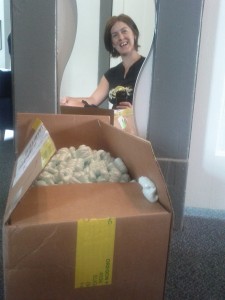
When Sara arrived on Raivavae with the spare parts, we arranged a few hours at their island workshop, and reassembled the pump with the new part and the injectors with new nozzles. While reinstalling the pump on the engine and checking the timing, I noticed a part that wasn’t moving properly, so we go back to the workshop the next day. Then a couple of days trying to repair Euloge’s seized outboard engine, and we’re back to working on our engine.
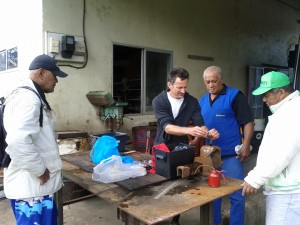
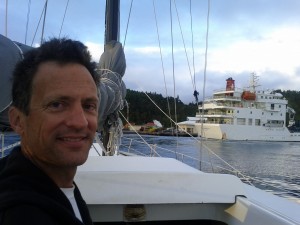
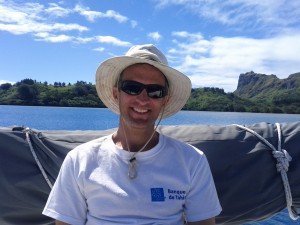
The decisive drama happens on the day a cargo ship, the Tuhaa Pae, is in port; there’s lots of noise and other activity to distract others from our little experiment. The first crank, I got only a small cough, but that was good! The second crank started the engine running. I now have a visceral sense of a “split-second”: it took me much less than a second to transition from “great!” to “terrible!”. The engine was not idling, but running out of control – a dramatic example of what happens when the pump’s “governor” is not governing! Imagine a car’s engine on a race track, whining at a high pitch that diesels are not supposed to make. I didn’t see the tachometer, but I would guess it was running at about 4500rpm.
Somehow, in the next second, I jump from the cockpit into the engine room to activate the pump’s cut-off valve. But that doesn’t work, either! I should have disassembled the pump further while in Rapa! I hadn’t thought to put in earplugs before starting the engine, but I spend the next minute sitting adjacent to a screaming engine. The first few seconds were disbelief: yes, the only way to stop this engine is to shut off the fuel supply; the rest of the minute was working frantically to remove the fuel feed pipe going into the pump.
I’m aware that Sara’s hovering outside, above the engine room, but wasn’t aware that she wanted to pull me out so we could jump in the water before the whole boat blew up. It didn’t help that the engine’s coolant cap exploded off the heat exchanger (the radiator cap on a car) and a green liquid geyser shot volcanically toward Sara, out of the engine compartment. It continues sputtering and gurgling next to me, covering me and everything in the engine room with a sickly sweet, green liquid.
Before the first minute is up, I’ve unbolted the fuel pipe, but that doesn’t stop the engine, the fuel is spraying everywhere, but the pump is vacuuming up enough to keep the engine running, so I bend the pipe out of the way and block the pump’s intake hole with my finger. Finally our poor runaway engine sputters to a halt.
I know that diesel is difficult to ignite as a liquid, so I didn’t expect a fire, but I think Sara wasn’t aware of that little detail. And there was a tiny flame jet coming out from around one of the injectors during all this excitement (I think she wasn’t aware of that, either, it being out of her view, otherwise I suspect she would have definitely jumped off). If at all possible, I wasn’t going to let the engine destroy itself … and there was a fire extinguisher beside me.
So we’re sailing.
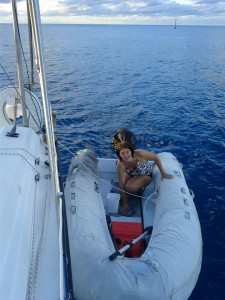
I DID get the engine running again; one could falsely say it “ran too well”. Certainly too fast. I don’t yet know if there’s any more damage, but I didn’t notice any sounds indicating other damage occurred. I may need to do a more complete overhaul now – the turbo bearings are probably damaged. One bit of certain collateral damage: our poor dinghy. She was floating proudly beside Illusion during this test, on the port side, near the transom – just the location of the main engine’s exhaust! She was a little blackened by all the excitement. Sara watched in horror as huge quantities of smoke, soot, water and probably fuel came out during the drama. Needless to say, our final days on Raivavae involved a lot of dinghy scrubbing and engine room cleaning…

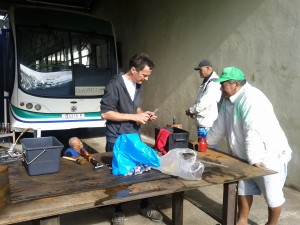
5 thoughts on “Engine Drama: The day it all went horribly wrong!”